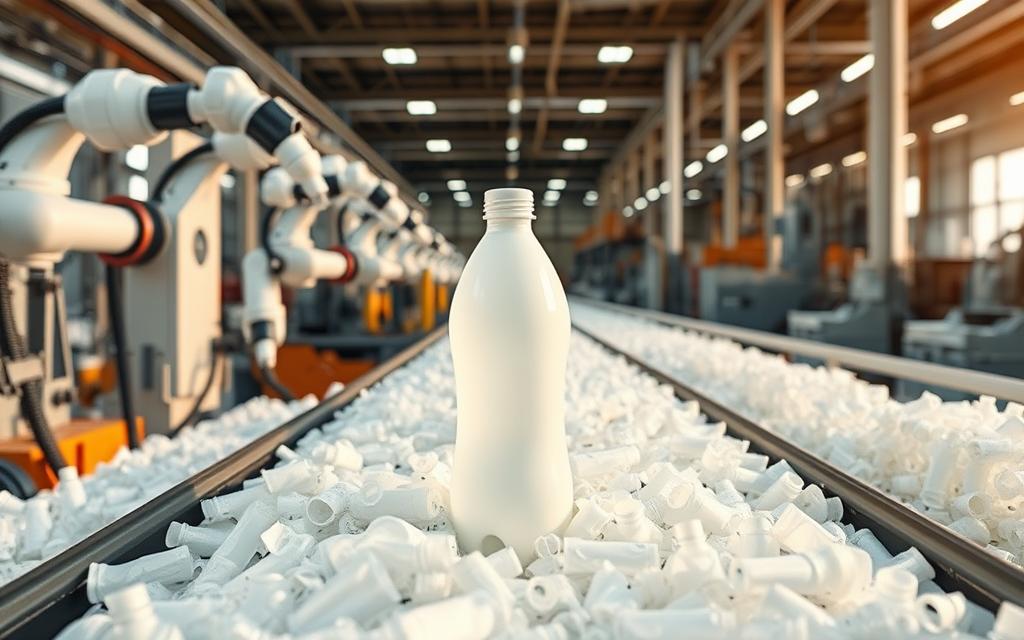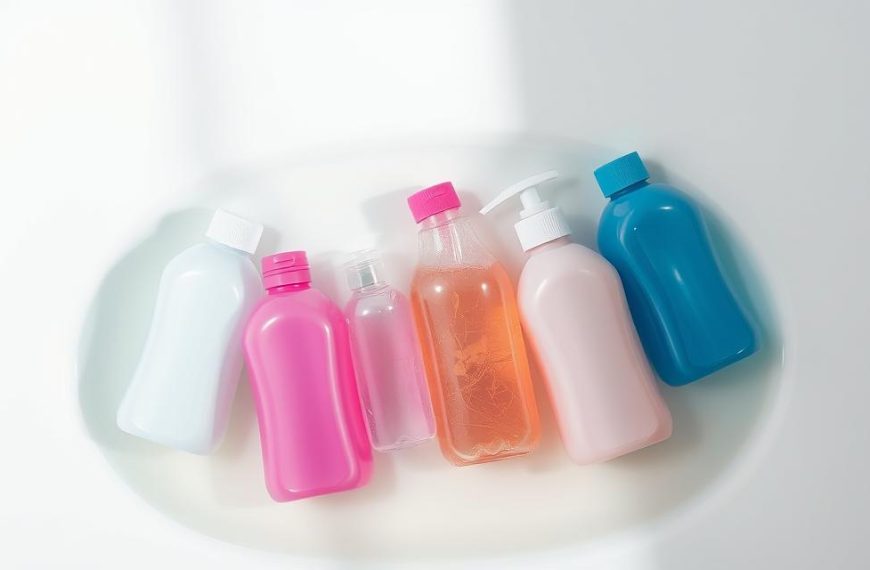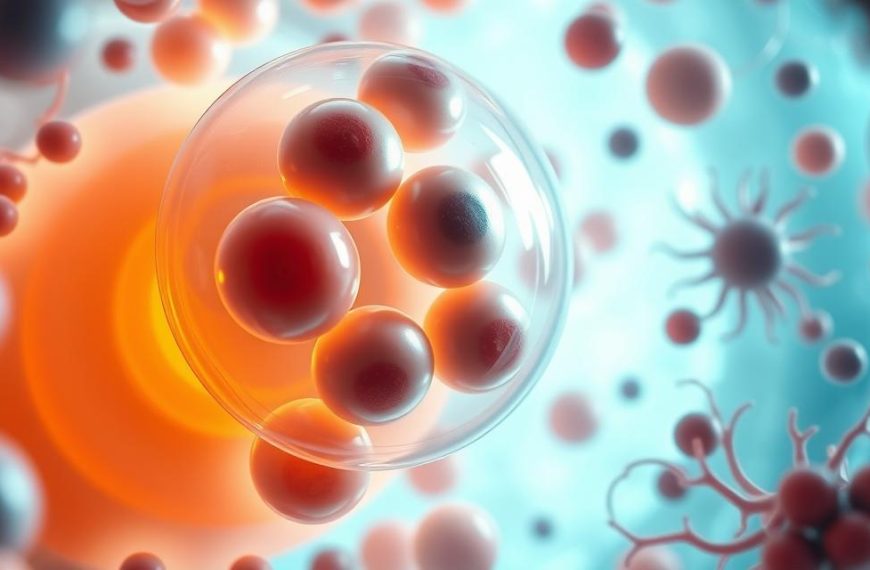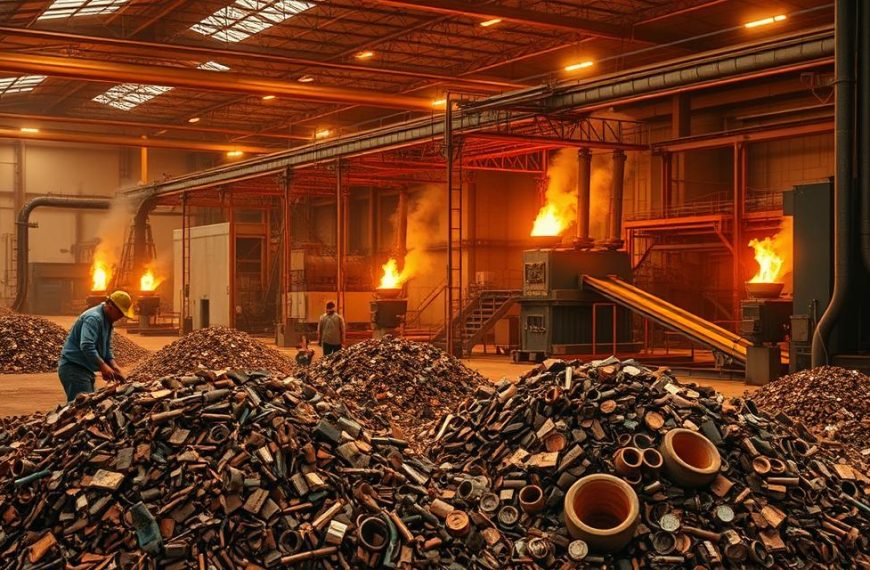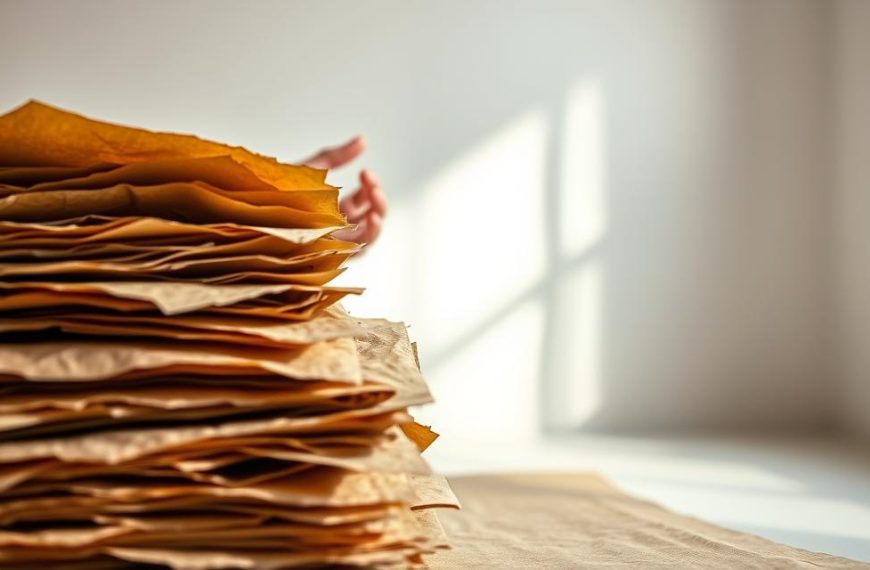Recycling has become a major focus for consumers worldwide. With 91% of all plastic produced never recycled, people are seeking ways to reduce waste. Common household items and packaging often include materials that raise questions about their recyclability.
One challenge is contamination, which complicates the recycling process. Economic barriers also play a role, as facilities need large volumes to stay profitable. Despite these hurdles, innovations like Plastics For Change’s shampoo bottle production show promise.
Certain types, such as PET and HDPE, are more recyclable than others. These materials often find new life in products like clothing and construction materials. Understanding these options helps consumers make informed choices.
What is White Plastic and Why Does It Matter?
Understanding the role of unpigmented polymers in daily life is essential. These materials, often referred to as unpigmented variants of common polymers like PET, HDPE, and PP, are widely used in packaging and household products. Their durability and versatility make them a popular choice for manufacturers.
Definition and Common Uses of Unpigmented Polymers
Unpigmented polymers are clear or naturally colored variants of common plastics. They are used in a variety of products, including milk jugs, shampoo bottles, and food containers. These materials are preferred for their strength and ability to maintain product integrity.
For example, HDPE is commonly used for milk jugs due to its resistance to chemicals and moisture. PET is often chosen for shampoo bottles because of its lightweight and recyclable nature. PP is ideal for food containers, though grease contamination can pose challenges during recycling.
Environmental Impact of Unpigmented Polymers
The environmental impact of these materials is significant. While they are recyclable, their decomposition timelines vary widely. For instance, LDPE bags can take 20-30 years to break down, while PVC contains hazardous chlorine compounds that harm the environment.
Recycling rates also highlight the issue. In the U.S., only 30% of HDPE bottles are recycled. Globally, 7.5 million tons of PET were collected in 2011, but much of it still ends up in landfills. This underscores the need for better recycling practices and innovations.
| Material | Decomposition Timeline |
|---|---|
| LDPE | 20-30 years |
| PET | 450 years |
| PVC | Over 100 years |
Contrasting unpigmented polymers with colored variants reveals additional challenges. Pigment removal during recycling is difficult, often leading to downcycling. This reduces the material’s value and limits its reuse potential.
Addressing these issues requires a combination of consumer awareness, improved recycling technologies, and policy changes. By understanding the role and impact of unpigmented polymers, we can make more informed choices about their use and disposal.
Can White Plastic Be Recycled?
The recyclability of certain materials often sparks curiosity among eco-conscious individuals. Understanding the hierarchy of reuse potential helps clarify which items are more likely to find a second life. Materials like PET and HDPE are highly reusable, while others, such as PVC and PS, pose significant challenges.
Types of Plastic and Their Recyclability
Different resin codes indicate the reuse potential of various materials. #1 PET, commonly found in beverage bottles, is highly reusable due to its lightweight and durable nature. #2 HDPE, used in milk jugs and detergent containers, is another top choice for recovery facilities.
#5 PP, often used in food tubs and packaging, has a lower reuse rate. Its degradation during processing limits its applications. Materials like PVC and PS are rarely reused due to their hazardous components and processing difficulties.
Specific Challenges with White Plastic Recycling
Sorting unpigmented materials presents unique hurdles. For example, rogue red-lid cart guidelines complicate the separation process. This often leads to contamination, reducing the value of recovered materials.
Material degradation is another issue. Reprocessed PP, or rPP, has color limitations that restrict its use in food packaging. Innovations like PET bottle houses in Karnataka show promise, but widespread adoption is still needed.
Contamination from caps and sprayers in detergent bottles further complicates the process. Industrial facilities handle these challenges better than curbside programs, highlighting the need for improved infrastructure.
How to Recycle White Plastic Properly
Effective waste management starts with understanding the process. Proper preparation and sorting are crucial to ensure materials are reusable. This section provides actionable steps and highlights common mistakes to avoid.
Steps for Preparing White Plastic for Recycling
Begin by emptying and rinsing containers thoroughly. Food residue causes 30% contamination, reducing the value of recovered materials. For oily items like PP containers, use warm soapy water to clean them properly.
Remove pumps and sprayers from bottles, as they often complicate the process. Caps under 2″ in diameter are typically trash, so check local guidelines. Sorting is equally important—separate tubs from film plastics to avoid confusion.
Regional variations exist, so consult local protocols. For example, Rogue Valley and Michigan have different rules. Compacting milk jugs without crushing them saves space and ensures they are processed correctly.
Common Mistakes to Avoid
One major error is wishcycling—placing non-reusable items in the bin. Frozen meal trays and microwave-safe containers often fall into this category. The “chasing arrows” symbol does not always mean an item is reusable, so verify its resin code.
Another mistake is neglecting to clean items properly. Grease and food residue can contaminate entire batches. Always follow Granger’s rules for sorting to ensure materials are handled correctly.
Finally, avoid over-compacting items. While saving space is important, crushing jugs or bottles can hinder the sorting process. Proper storage and preparation make a significant difference in the success of recycling efforts.
Challenges in Recycling White Plastic
The journey toward sustainable waste management faces numerous obstacles. From contamination to economic constraints, the recycling process is far from straightforward. Understanding these challenges is key to improving the system.
Contamination Issues
One of the biggest problems in recycling is contamination. Multi-layer packaging, such as sandwich containers with PP bodies and PET film lids, often cannot be processed. This complexity leads to significant material loss.
Consumer confusion also plays a role. Items like frozen meal trays or microwave-safe containers are frequently misplaced in recycling bins. This wishcycling contaminates entire batches, reducing their value.
Facilities face additional hurdles with optical sorters. These machines struggle to differentiate between clear and unpigmented materials, further complicating the process.
Economic and Technical Barriers
Recycling facilities require substantial investments. Costs often exceed $2 million, with a need for daily throughput of 10,000+ pounds to remain profitable. This economic barrier limits the number of operational facilities.
Technical challenges also persist. For example, rPET often requires blending with virgin materials to maintain quality. This reduces the environmental benefits of recycling.
Case studies, like Dart Container’s foam recycling specialization, highlight innovative solutions. However, widespread adoption of such technologies remains limited.
Chemical recycling offers hope for food-contaminated PP, but it’s still in its early stages. Comparing U.S. and EU infrastructure reveals the impact of bottle deposit systems, which improve recovery rates significantly.
“The low cost of oil makes recycling less competitive compared to virgin polymer production.”
Addressing these issues requires a multi-faceted approach. Improved consumer education, advanced sorting technologies, and supportive policies are essential for progress.
Conclusion: The Future of White Plastic Recycling
The future of sustainable materials hinges on innovative recycling solutions. By 2025, the industry aims to achieve a 50% PET bottle recycling rate, driven by advancements in technology and consumer awareness. Brands like Unilever are leading the way with 100% recyclable packaging, setting new standards for the market.
Consumer actions play a crucial role in this process. Supporting bottle bill legislation ensures higher recovery rates for recyclable items. Enzymatic recycling breakthroughs also offer hope for challenging materials like PS and PVC, promising a more efficient process.
Proper preparation of materials, such as milk jugs, remains essential. By rinsing and sorting items correctly, we can reduce contamination and improve recycling outcomes. Together, these efforts pave the way for a more sustainable future.

